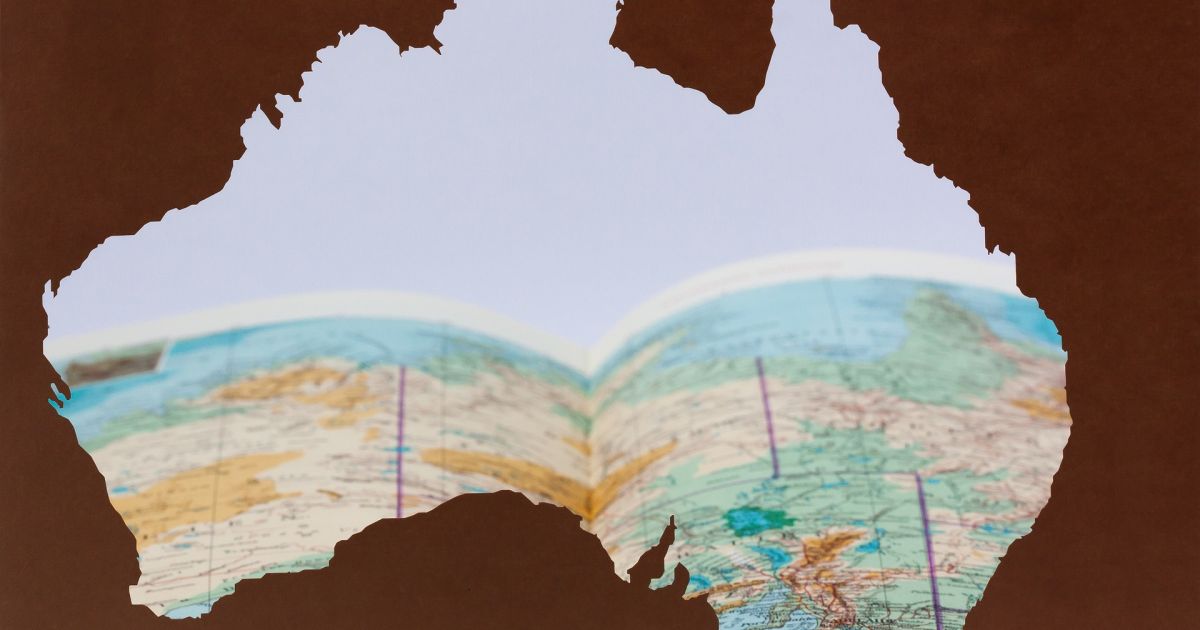Australian geological history is one of the oldest and most revealing on Earth, tracing back over 4.4 billion years to the planet’s earliest days. This vast and ancient land has witnessed the birth of continents, the collision of tectonic plates, the rise and fall of supercontinents, and the slow sculpting of landscapes through wind, water, and time. Few places offer a more complete story of Earth’s deep-time evolution, and Australia’s rocks, fossils, and formations have become key tools for geologists seeking to understand how our world was formed. The continent is home to the oldest known minerals on the planet, found in the Jack Hills zircon of Western Australia, dating to a time shortly after Earth’s crust solidified, as detailed by Geoscience Australia.
This ancient narrative begins with the formation of stable landmasses called cratons, specifically the Yilgarn and Pilbara cratons, which have remained geologically stable for billions of years. These areas have not only preserved evidence of early continental crust but also shaped much of the country’s mineral wealth, as highlighted by the Australian Government Department of Industry, Science and Resources. The preservation of such old geological structures offers a window into the Archean Eon, a period crucial to understanding the formation of the Earth’s surface and atmosphere. These cratons form the geological basement of Australia and serve as the bedrock upon which the continent’s identity has evolved, an idea supported by studies from institutions like the CSIRO.
Throughout its deep past, Australia has been part of several supercontinents, from Rodinia over a billion years ago to Gondwana, and eventually Pangaea. These shifting tectonic relationships influenced global climates, ocean circulation, and even evolutionary trends in life. As the landmass gradually separated from Antarctica about 45 million years ago, Australia began its slow northward drift, creating the unique biodiversity and dry interior that we associate with the continent today. The movement of the continent continues at approximately 7 centimeters per year, a fact observed by geological monitoring agencies like UNAVCO and discussed in depth by the International Union of Geological Sciences.
In addition to tectonics, Australian geological history is profoundly rich in fossils. The Ediacaran Hills of South Australia preserve fossils of some of the earliest multicellular life, offering insight into the pre-Cambrian biosphere. In Queensland, the discovery of Cretaceous dinosaurs in the Winton Formation has expanded the global understanding of Mesozoic ecosystems. These discoveries are chronicled and displayed by world-class institutions such as the Australian Museum and Queensland Museum. The fossil record here not only narrates the story of ancient life but also provides evidence of how plate movements and ancient environments shaped biological evolution.
Australia’s geological past also contributes significantly to modern society through its immense mineral and energy resources. From coal deposits in New South Wales to lithium in Western Australia, the economic backbone of the nation has been built on these ancient foundations, a fact emphasized by the Minerals Council of Australia. The connection between deep-time geology and modern industry is both economically and scientifically invaluable. As the Earth continues to evolve, the legacy embedded in Australia’s rocks will remain a cornerstone of global geological understanding, continually explored by organizations such as the Geological Society of Australia.
Formation of the Ancient Australian Craton
The Archean Roots of the Continent
The foundation of Australian geological history lies in the ancient cratons, particularly the Pilbara and Yilgarn cratons, which date back over 3.5 billion years. These regions in Western Australia are among the oldest pieces of continental crust on Earth. The Jack Hills zircon crystals, discovered in the Yilgarn craton, are over 4.4 billion years old, offering critical insights into early Earth conditions.
Stability and Geological Resilience
Australian cratons are characterized by extreme geological stability. Unlike many other regions of the world, large portions of the Australian continent have not been subjected to major tectonic disturbances for over a billion years. This stability has made Australia a prime location for preserving ancient geological features.
Cratons as Mineral Treasure Chests
The age and structure of Australian cratons have made them rich in mineral resources. The Yilgarn craton alone produces more than 60% of Australia’s gold, and the region has contributed significantly to the nation’s $420 billion mining industry. Iron, nickel, and lithium are also heavily extracted from these ancient rocks.
Preservation of Ancient Surfaces
Some surfaces in the Pilbara region have remained virtually unchanged for over 2.5 billion years, making them invaluable to geologists studying the early Earth. These well-preserved terrains provide a rare glimpse into surface processes during the Archean eon.
Influence on Modern Geoscience
The cratons have influenced not only Australian geological history but also global geoscientific theories. Research on these ancient formations continues to shape our understanding of plate tectonics, continental formation, and the evolution of Earth’s crust.
The Rise and Fall of Mountains Through Deep Time
The Petermann Orogeny and Ancient Uplift
About 550 million years ago, the Petermann Orogeny formed mountains as high as the Himalayas in central Australia. These ranges, though now eroded, are key to understanding Australian geological history. The remnants are found in the Musgrave Ranges, which still rise to over 1,100 meters.
Alice Springs Orogeny and Intracontinental Compression
Around 400 million years ago, the Alice Springs Orogeny caused intense folding and faulting across central Australia. It affected an area spanning over 1,000 kilometers, demonstrating that even stable cratonic interiors are not immune to mountain-building events.
The Great Dividing Range Emergence
The Great Dividing Range, Australia’s longest mountain chain, formed between 300 and 200 million years ago and stretches over 3,500 kilometers. It was shaped by tectonic uplift and volcanic activity, playing a crucial role in shaping the eastern seaboard’s topography.
Erosion and Landscape Transformation
Despite their initial height, most Australian mountain ranges have been heavily eroded. For instance, the MacDonnell Ranges were once towering structures but now rise only about 700 meters above sea level due to millions of years of weathering and erosion rates of approximately 10 meters per million years.
Geological Legacy in Present Landscapes
These ancient mountains continue to influence hydrology, biodiversity, and even human settlement. Their history is embedded deeply in Australian geological history, with rivers like the Murray-Darling tracing old mountain erosion paths, and mineral deposits lying within former mountain belts.
Australia’s Role in the Supercontinent Cycle
Gondwana and the Southern Alliance
Australia was a vital part of Gondwana, which formed around 600 million years ago. It remained connected to Antarctica, Africa, and South America until the supercontinent began to break apart 180 million years ago. Fossils like Glossopteris plants found across these continents confirm this connection.
Pangaea and Pre-Gondwanan Assemblies
Before Gondwana, Australia was involved in earlier supercontinents like Rodinia, which formed about 1.1 billion years ago. Its placement helped define the orientation and geodynamic evolution of ancient plates, contributing significantly to the broader narrative of Australian geological history.
Continental Drift and Isolation
Australia’s final separation from Antarctica occurred approximately 45 million years ago, due to tectonic drift at a rate of 7 cm per year. This event marked a turning point in Australian geological history, leading to the development of a unique flora and fauna as the landmass drifted north.
Modern Plate Movements
Today, Australia is moving northward at one of the fastest rates among continental plates — about 7 centimeters per year. This motion is a continuation of the processes that governed past supercontinent dynamics, offering a live view of ongoing tectonic evolution.
Climatic and Biological Consequences
Australia’s role in the supercontinent cycle has had profound implications for global climate and biodiversity. The drift from polar to equatorial latitudes helped foster the formation of arid interior zones and rainforests in the northeast, shaped by long-term geological positioning.
Fossils, Rocks, and the Story They Tell
The Ediacaran Revolution
The Ediacaran Hills in South Australia host fossils over 570 million years old, representing some of the earliest multicellular life on Earth. These fossils mark a pivotal moment in Australian geological history, offering evidence of life just before the Cambrian Explosion.
Dinosaur Discoveries in Queensland
In the Winton Formation of Queensland, paleontologists have uncovered major dinosaur fossils such as Australovenator and Diamantinasaurus, dating back 95 million years. These discoveries contribute not only to global paleontology but also highlight the richness of Australian geological history.
Mesozoic Marine Fossils in Western Australia
Regions like Gingin in Western Australia have yielded marine fossils from the Jurassic and Cretaceous periods, including ammonites and marine reptiles. These rocks help reconstruct Australia’s ancient coastlines and sea levels, which were up to 200 meters higher than today.
Coal and Organic Rich Sediments
The existence of vast coal reserves in New South Wales and Queensland indicates the presence of dense tropical swamps during the Permian period, around 280 million years ago. This organic-rich environment has contributed significantly to Australia’s energy resources.
Trace Fossils and Geological Timekeeping
From stromatolites in Shark Bay — the living relatives of 3.5-billion-year-old microbial mats — to ancient burrows and trackways, trace fossils provide a timeline that spans nearly the entirety of Earth’s biological history. Their presence reinforces the enduring narrative of Australian geological history.




